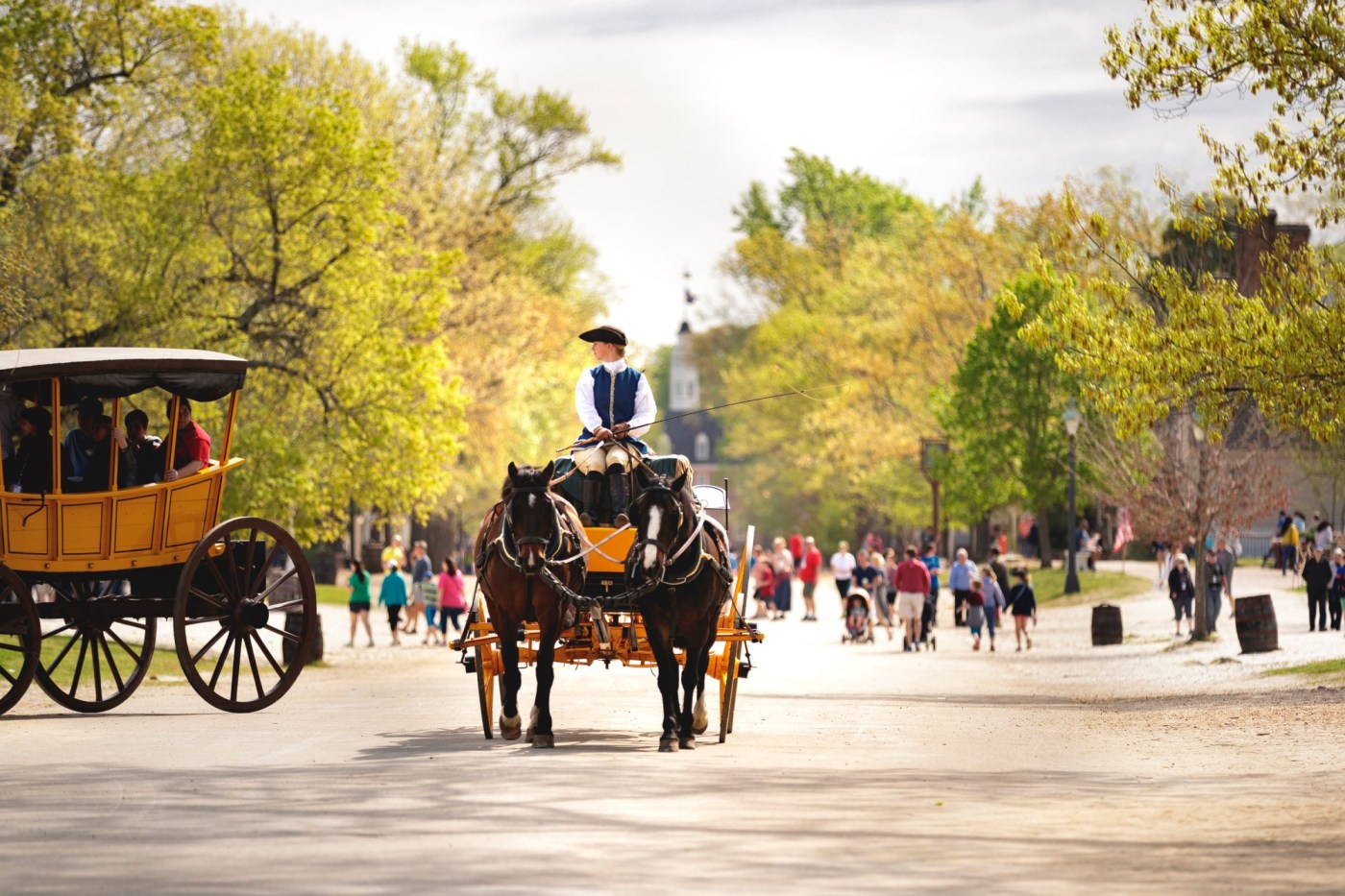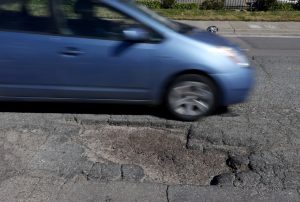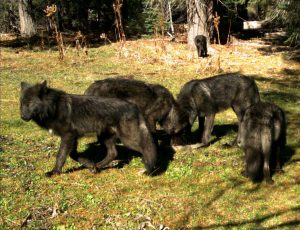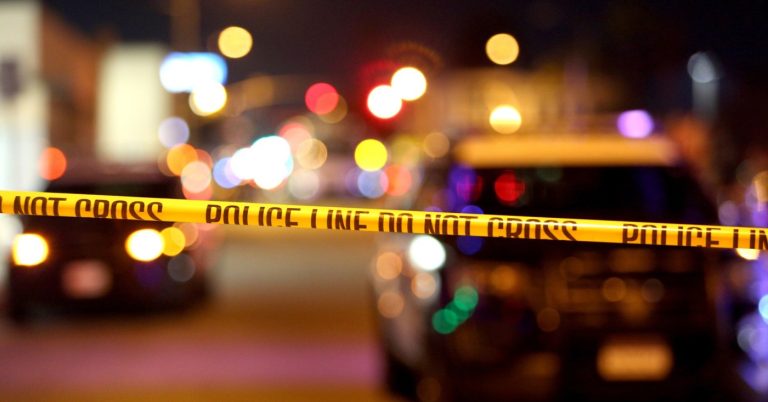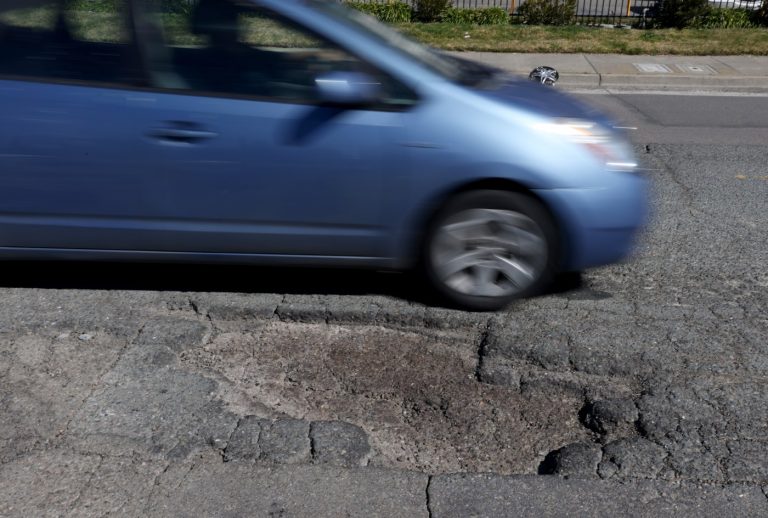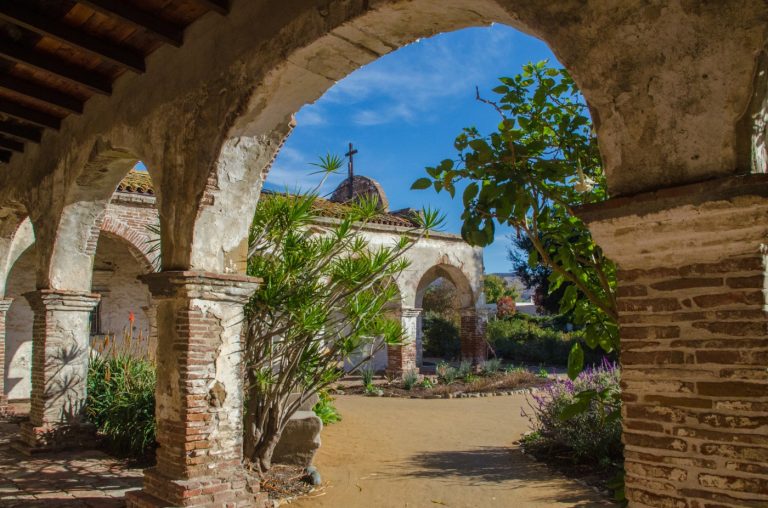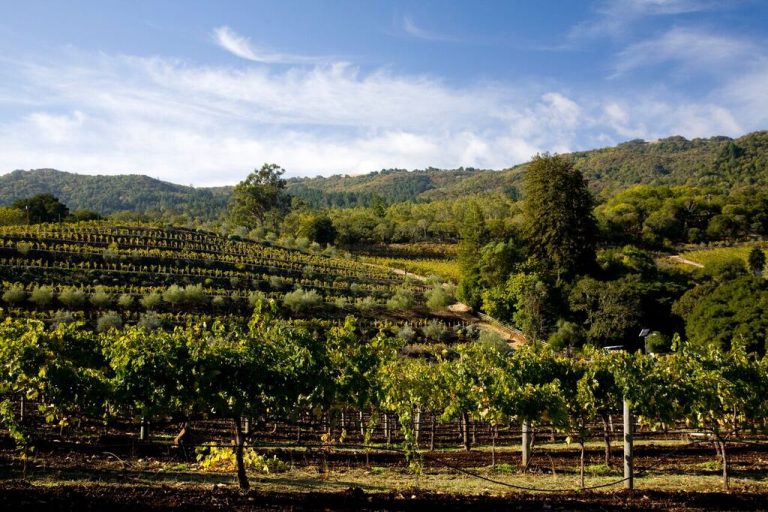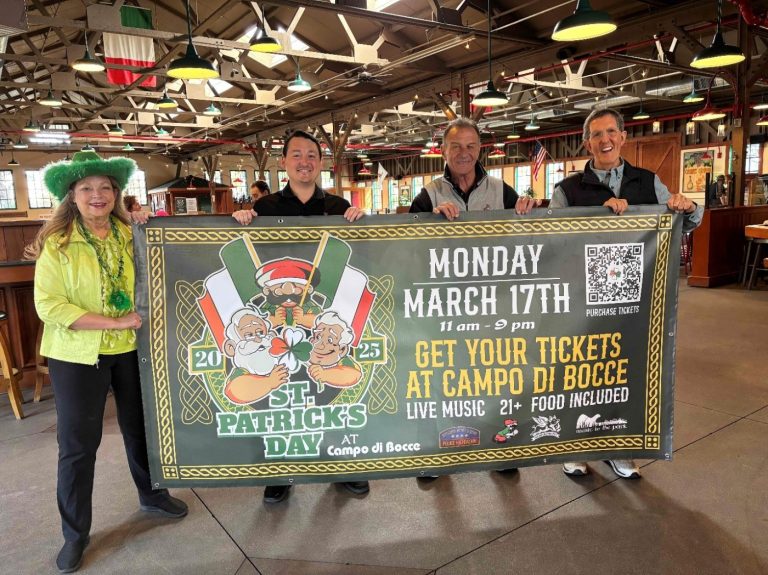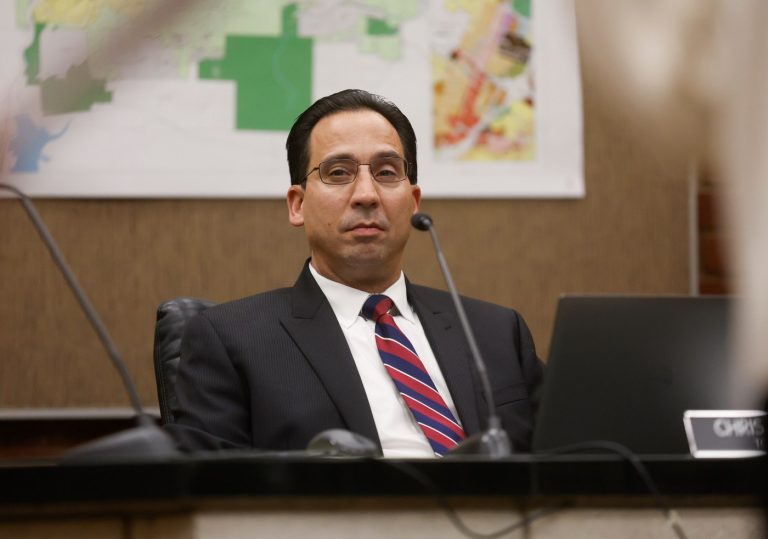I grew up in the modest city of Williamsburg, Virginia. Our “thing” was being the location of the first permanent English settlement and original capital of Virginia. But to me, these were just a part of downtown.
I lived in the area until I was 18 and colonial history became second nature for me and my friends. Anytime we saw a person dressed in colonial clothes or bearing a musket, we thought, “Oh, just another Colonial Williamsburg employee” — if we even thought twice about them.
I went to Lafayette High School, one of the area’s three medium-sized secondary schools. But after leaving to attend college at the University of North Carolina at Chapel Hill, I noticed something for the first time: what it was like to not be surrounded by old-style buildings or see 18th-century blacksmiths while shopping at Trader Joe’s. Chapel Hill had history, but it was written on plaques or printed in books. It wasn’t all around you every day.
Blacksmith Aislinn Lewis works at a forge in the James Anderson Blacksmith Shop & Public Armoury in Colonial Williamsburg’s Historic Area. (Darnell Vennie/The Colonial Williamsburg Foundation/TNS)
This realization made me curious about my hometown’s roots. I wondered what it would be like to really appreciate the significance of the place I lived in for almost two decades.
Tom Savage, 67, understands. He lives in the middle of Colonial Williamsburg, the re-created capital that is essentially stuck in the late 1700s.
Every morning, Savage wakes up in the 18th-century Palmer House in the middle of Colonial Williamsburg. In the evening, he sits on the front steps with a glass of wine and talks to visitors who have come from all over the country — and sometimes the world — to experience 89 colonial-style buildings and 301 acres of American history.
Savage, who is Colonial Williamsburg’s director of educational travel and conferences, said living here is his 12-year-old self’s ultimate fantasy. He grew up in Virginia and visited the historical city as a child, which influenced his career and decision to attend the adjacent College of William and Mary.
“Having a house in the historic area, which I use to entertain both personally and on behalf of Colonial Williamsburg, gives me a real showcase to highlight the historic area, the craftsmanship,” he said.
Williamsburg was the capital of Virginia from 1699 to 1780, putting it front and center as Americans’ struggle for independence ignited into a revolution. In addition to Colonial Williamsburg, the area is home to the Jamestown Settlement, a 17th-century living history museum of the first permanent English settlement, and the Yorktown Battlefield, where the United States won its independence and ended the Revolutionary War.
I visited these places numerous times on field trips in elementary school, and the Jamestown Settlement was less than 10 minutes from my house. I remember boarding the Susan Constant, a reproduction of the flagship sent from London to establish Jamestown in 1606, and being incredibly excited.
Since I was an energetic kid, I spent a lot of time ignoring the tour guides and darting around the deck, pretending I was on a maritime adventure. This experience may have been one of my inspirations to join the sailing club in college.
“It’s a really unique place to live,” said Chas Ritinski, training and development manager for the Jamestown-Yorktown Foundation, which oversees both the Jamestown Settlement and the American Revolution Museum at Yorktown.
Fourth of July fireworks display over the Governor’s Palace in Colonial Williamsburg’s Historic Area. (Darnell Vennie/The Colonial Williamsburg Foundation/TNS)
“Colonial Williamsburg is the largest living history museum in North America and so there are just museums everywhere of all different topics,” Ritinski said. “It’s a really neat area to live in.”
The City of Williamsburg’s Economic Development Department lists Colonial Williamsburg as a “major tourist attraction,” with 533,700 admission tickets sold in 2019. The number of visitors has been slowly rising since the onset of the COVID-19 pandemic, officials said.
Many of these tourists come to see employees working as 18th-century tradesmen in Colonial Williamsburg. Over 20 pre-industrial trades are practiced on a daily basis throughout the historic district. Savage refers to the area as a “living Diderot encyclopedia,” after French philosopher Denis Diderot, one of the originators of the Enlightenment.
Tradesmen who work in Colonial Williamsburg go through years-long apprenticeships to learn how to be blacksmiths, tailors, wigmakers and make these items just like they did over 200 years ago, said Ritinski, who also attended William and Mary and volunteered at the museums as a student.
“While I’m into history, I know a lot of people aren’t. And what’s neat about the living history museums in the region is they really make history accessible,” Ritinski said. “You can go to Jamestown and climb aboard a ship. You can go to Yorktown and hear a cannon fire. There’s a lot of really unique things you can see to make history come alive.”
The Jamestown Settlement and Yorktown Battlefield felt like a different world entirely to me when I was young. I went to the local elementary and middle school. My mom took me to the grocery store in an old strip mall. I would beg my parents to take me to GameStop to get the new Legend of Zelda game every time Nintendo announced a new release.
The historical district and the rest of the city were divided, but I think that’s what made it so special.
One of the best parts about living in the area is its modern versatility, Savage said. While the colonial part of the city is considered downtown by many locals, Williamsburg also boasts New Town, a 365-acre mixed-use “new urbanism” community.
With a slew of homes and offices, New Town is where many of Williamsburg’s upscale shops, fine dining and professional businesses reside. The destination has always been a hot spot for locals, tourists and 15-year-old me, when I and my friends wanted to see a movie or get ice cream.
“I think you get the best of both worlds,” Savage said. “All the modern conveniences are available.
“Williamsburg has expanded vastly since my student days, and I’m certainly in New Town once if not twice a week. Either to go out to dinner or go to a shop or perhaps a movie with friends.”
When I visited my parents a few months ago, I also noticed new apartments, restaurants and shops between New Town and Colonial Williamsburg. It calls itself “Midtown Row,” but everyone seems to shorten that to “Midtown.” The recently built development replaced a section of an old strip mall.
Related Articles
These are the safest European countries for driving rental cars
Travel Troubleshooter: Bank and cruise line argue over who is responsible for a refund
What it’s like to travel to Maui right now — a year after the catastrophic wildfires
Travel: Pocket-sized gets scaled up with Polly Pocket Airbnb experience
What I learned from my first EV road trip
Williamsburg is developing at a fast enough pace to give me mixed feelings. I was nostalgic for those old stores, but expansion shows the economy is thriving. Maybe the city will even have an Apple Store soon.
The largest industry in Williamsburg is lodging and food services, according to the Department of Economic Development. Restaurants are rampant across commercial and historical areas, and cater to the 6 million area visitors each year.
“Some people complain about tourists, but at the end of the day, they play an important role in the economy,” Ritinski said. “They’re coming here, there’s tourist dollars, and more importantly, people are coming who want to learn stuff.”
And everyone who lives and visits Williamsburg gets to experience its breadth of history.
“You see that history everywhere. You can get off work and go to a grocery store and you see a colonial guy buying his groceries,” Ritinski said.
“You go to run another errand and you see another colonial person. You run a 5K Thanksgiving morning and you see colonial people in Nikes running before they go to work. The history is everywhere.”
While I was living there I had a hard time viewing this as significant because I was so used to it. I even wondered why anybody would want to come to Williamsburg as a tourist.
I understand much more now that I’m gone. Oh, and I forgot to mention, we also had Busch Gardens Williamsburg and Water Country USA, which we would visit a few times every year. Just a minor thing, but they were really awesome, too.
©2024 PG Publishing Co. Visit at post-gazette.com. Distributed by Tribune Content Agency, LLC.
